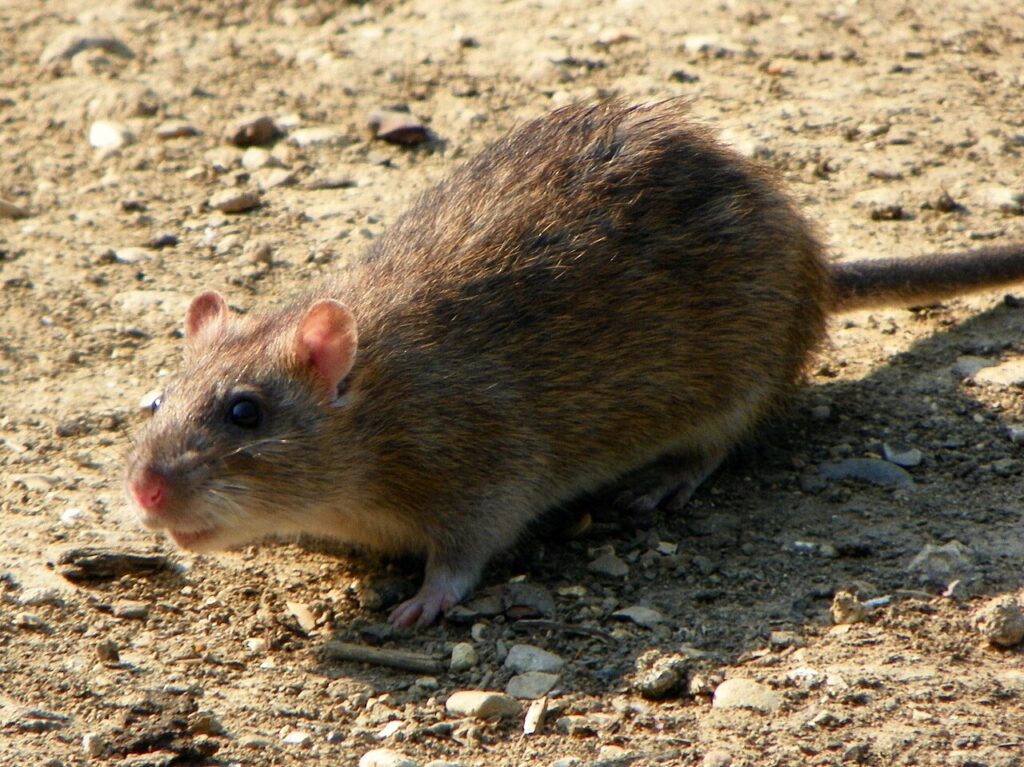Overview

Norway rats, also known as the brown or sewer rat, is a common pest in urban and rural areas. These rodents pose health risks and cause structural damage by gnawing through various materials, contaminating food, and spreading disease. Their effective control requires a combination of identification, trapping, and preventive measures.
Identifying Norway Rats
Appearance
Norway rats are larger than most rodents, with broad bodies and blunt muzzles. Their fur is brown on the back and sides, and gray or yellowish on the belly. A distinguishing feature is their shorter tail, which is lighter underneath and shorter than the combined length of their head and body. They weigh between 10 and 17 ounces and can grow up to 18 inches in length. Their small ears appear half-buried in fur, and their front paws have four toes, while the back paws have five.
Life Cycle
Female Norway rats breed starting at three months of age, with a gestation period of 25 days. Litters typically consist of 6 to 14 pups, with intervals of 60 to 65 days between litters. In the wild, they live for about two years, with the first few months spent nesting. Most rats reach peak activity by nine months, after which their activity declines.
Senses and Physical Abilities
- Sight: While rats can detect motion and variations in light, their overall vision is poor.
- Smell: Their sense of smell is highly developed.
- Touch: Sensitive whiskers help them navigate.
- Gnawing: Rats’ incisors grow 5 inches per year, making them adept at gnawing through wood, pipes, and even aluminum.
Norway Rats Behavior and Habitat
Food & Water Habits
Rats require ¾ to 1 ounce of food and about 1 ounce of water per day. They are omnivores, but Norway rats prefer meats and will transport food to their burrows. Their maximum drive for food occurs after three days of starvation.
Nocturnal Activity and Nesting
Norway rats are mostly nocturnal, but will forage during the day if food or water is scarce. They build nests in secure locations such as walls, under machinery, and in burrows, typically no more than 18 inches deep.
Travel Routes and Migration
They establish regular travel routes, often maintaining contact with a vertical surface for security. In extreme conditions, such as food scarcity or flooding, mass migrations can occur.
Controlling Norway Rats
Effective Trapping and Baiting
Due to their cautious nature, Norway rats can be difficult to trap. Pre-baiting is essential to condition them to new traps. Place traps along walls, about 6-10 feet apart, with sufficient bait to ensure a lethal dose. In homes, always use tamper-resistant bait stations.
Exclusion Methods
Rodent control begins with proper sanitation and exclusion. Seal holes, trim foliage, and remove debris to prevent rats from entering structures. Ongoing sanitation, along with trapping and exclusion, ensures long-term control.
Infestation Signs of Norway Rats
- Droppings: Fresh droppings are soft and shiny, while older ones are hard. The size and number of droppings indicate the extent of the infestation.
- Tracks: Look for distinct handprint-like tracks in dusty areas.
- Gnaw Marks: Fresh gnawing on wood appears lighter in color.
Controlling Norway rats involves proactive measures, consistent monitoring, and a multi-faceted approach to prevent their return. Take control of your problem today—contact us for a free consultation and protect your home from infestations. You can also learn more about the biological characteristics and behavior of the Rattus norvegicus at the Animal Diversity Web.
